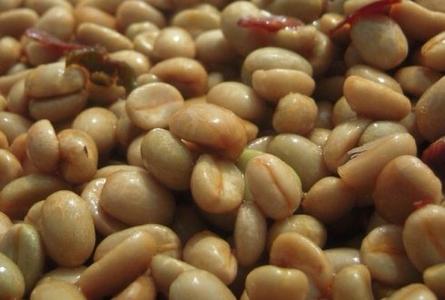How many coffee beans can be produced by each coffee tree-three major producing areas of coffee beans
How many coffee beans can be produced by each coffee tree-three major producing areas of coffee beans
The origin of the coffee tree is Ethiopia in Africa. In botany, coffee trees belong to the evergreen trees of the subgenus Rubiaceae, and coffee beans, commonly known as coffee beans, are the seeds of the fruit of coffee trees, just because they are shaped like beans, so they are called coffee beans.
Climate is the decisive factor for coffee cultivation. Coffee trees are only suitable for growing in the tropics or subtropics, so the zone between latitude 25 degrees south and north is the most suitable for growing coffee. This coffee production zone is generally referred to as "coffee belt" or "coffee area".
However, not all the land located in this area can cultivate good coffee trees. The ideal planting conditions for coffee trees are: a warm climate with a temperature of 15-25 ℃, and a rainfall of 1500-2000 mm throughout the year, and the rainfall time should be consistent with the flowering cycle of the coffee tree. Of course, in addition to the coordination of seasons and rainfall, there should be fertile soil. The most suitable soil for growing coffee is a well-drained, fertile soil containing volcanic ash.
In addition, although sunlight is an indispensable element for the growth and fruiting of coffee, too strong sunlight will affect the growth of coffee trees, so various producing areas will usually cooperate with the planting of some sunshade trees. generally plant higher trunk plants such as bananas, mangoes and legumes. The ideal altitude is 500-2000 meters above sea level. Therefore, the quality of Jamaican Blue Mountain coffee, which grows at an altitude of 8-1200 meters, is the best. It can be seen that the conditions for cultivating high-quality coffee are very strict: sunlight, rainfall, soil, air temperature, as well as the way coffee beans are harvested and the process of making coffee beans will affect the quality of coffee itself.

Important Notice :
前街咖啡 FrontStreet Coffee has moved to new addredd:
FrontStreet Coffee Address: 315,Donghua East Road,GuangZhou
Tel:020 38364473
- Prev

How to make coffee from newly picked coffee beans
How do newly picked coffee beans be made into Coffee Taiwan Bay Coffee blossoms every spring and produces turquoise coffee fruit after fade, which ripens for six to eight months. The color of the exocarp of coffee fruit gradually turns red, and the color changes from light red to dark red, and then to dark red. When the color of coffee peel changes to crimson and dark red, it has the best maturity and is the best time to harvest. Such as
- Next

What will be the effect of semi-washing on the flavor of coffee beans?
What will be the effect of semi-washing on the flavor of coffee beans 1. Simple, low processing cost. two。 The raw bean is naturally dried in the pulp and absorbs the fruit essence, so the fruit aroma is rich, sweet and obvious, and the alcohol thickness is superior to the shortcomings of the solarization method. In some producing areas, the sun treatment did not screen the floating beans, resulting in quality ups and downs. During the drying process, the pulp is prone to mildew due to the return of moisture, polluting raw beans 3. Machine shelling
Related
- Guji coffee producing area of Guji, Ethiopia: Humbela, Shakiso, Wulaga
- What is the most expensive variety of Qiloso in BOP multi-variety group?
- How to store the coffee beans bought home?
- Why are Yemeni coffee beans so rare now?
- Ethiopian Sidamo all Red Fruit Sun Sun Santa Vini Coffee beans
- SOE is mostly sour? What does it mean? Is it a single bean? what's the difference between it and Italian blending?
- Is Italian coffee beans suitable for making hand-brewed coffee?
- How to choose coffee beans when making cold coffee? What kind of coffee beans are suitable for making cold coffee?
- Just entered the pit to make coffee, what kind of coffee beans should be chosen?
- Can only Japan buy real Blue Mountain Coffee? What are authentic Jamaican Blue Mountain coffee beans?

